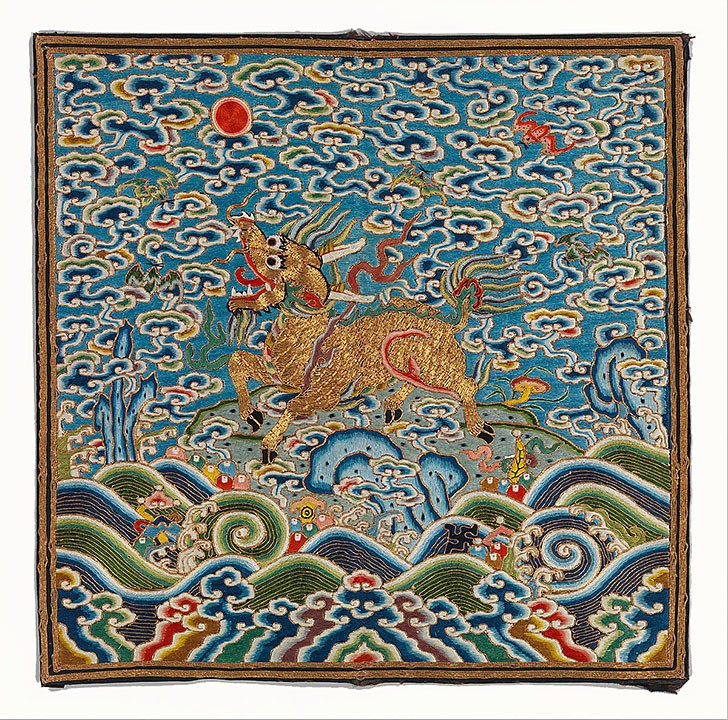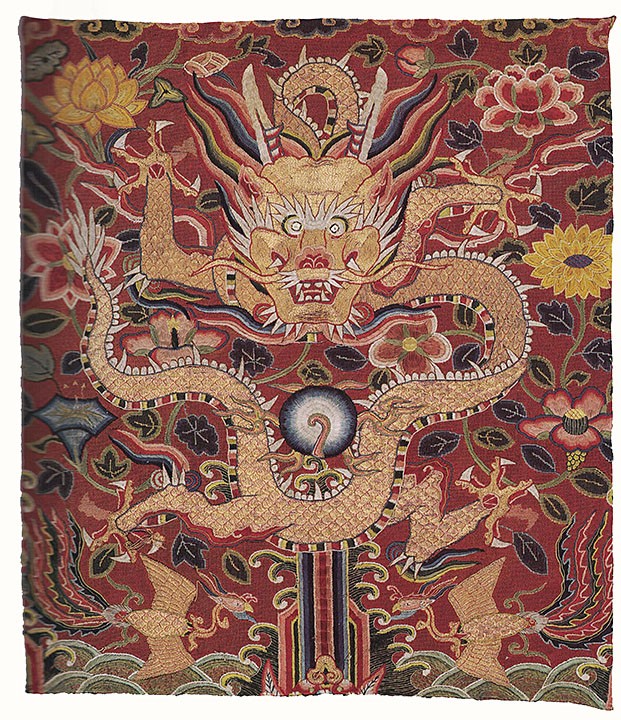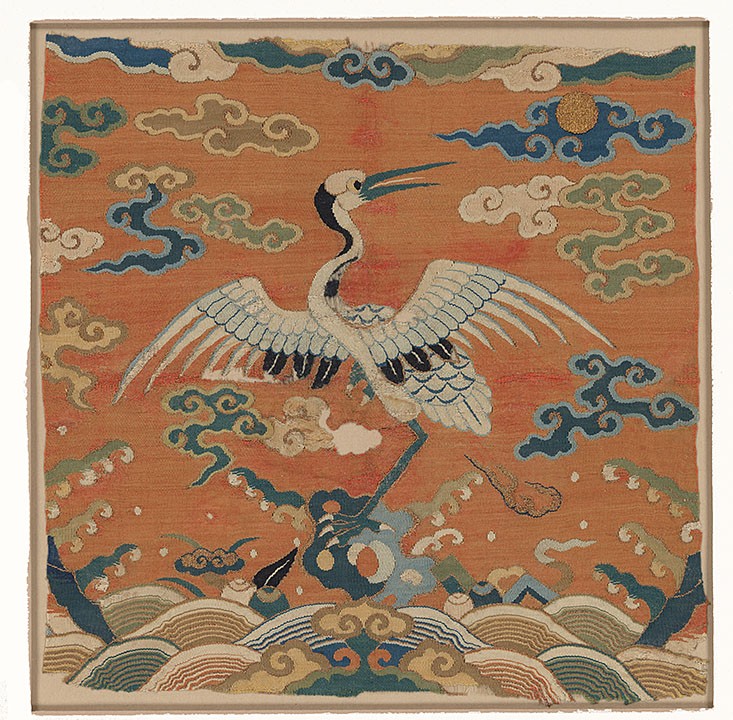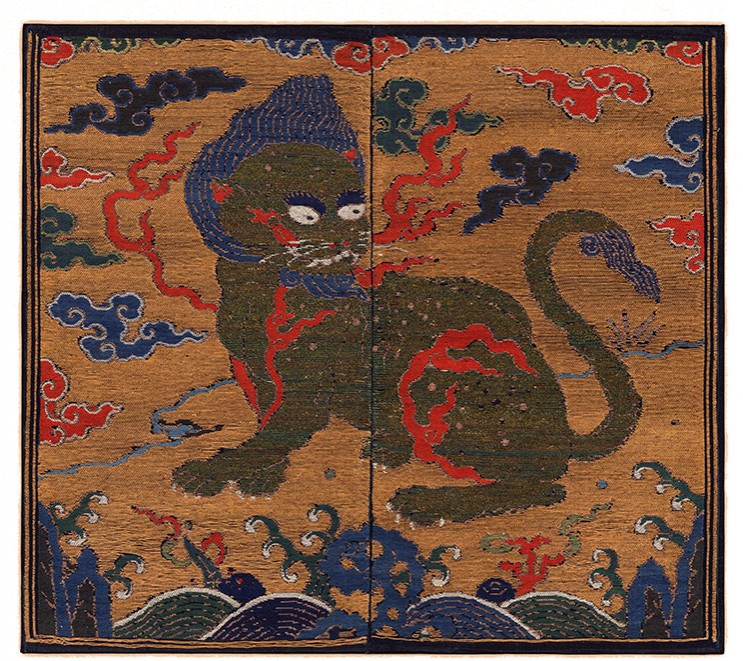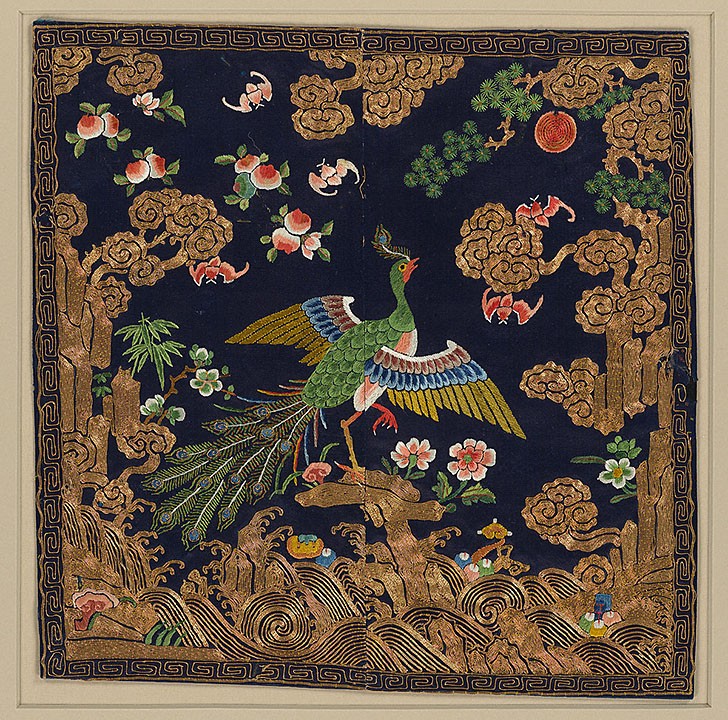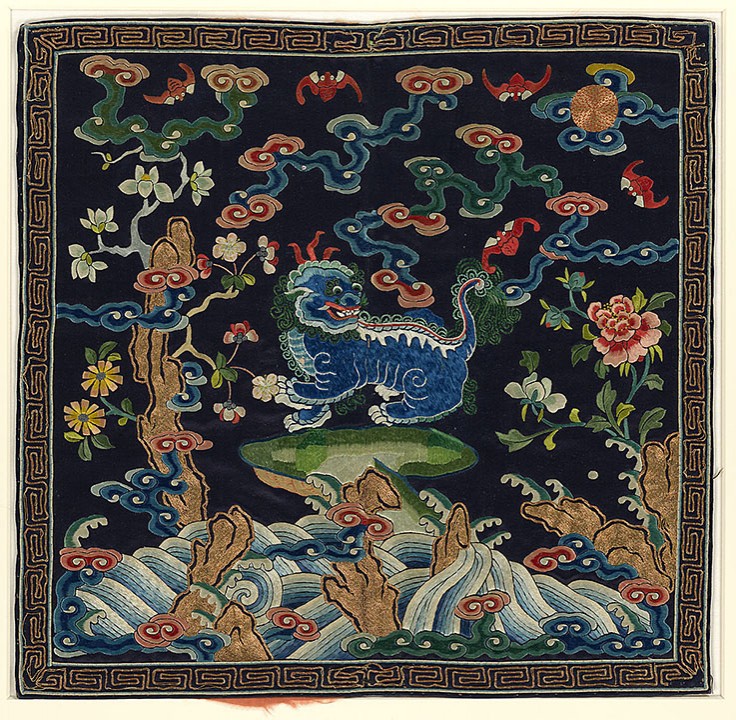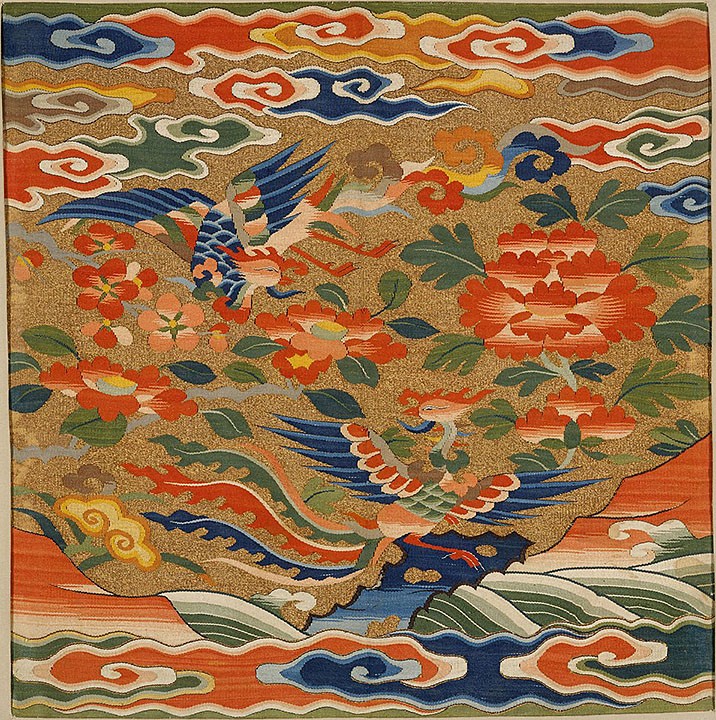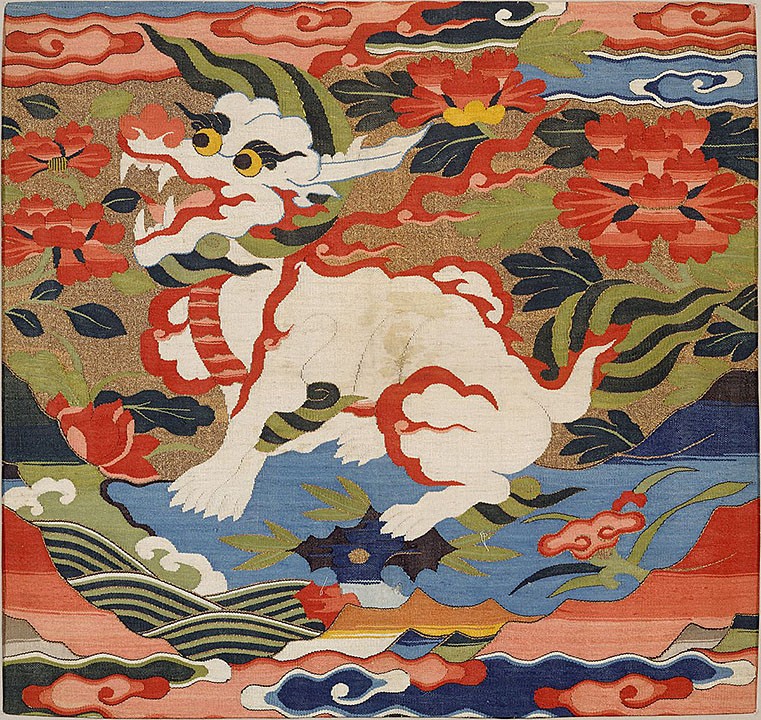Oriental Rugs Dictionary
Chinese Rank Badges
Mandarin Chinese rank badges were first worn by Ming dynasty Chinese officials beginning in the 14th century with continued use through the end of the Ching dynasty in the 20th century. Like other aspects of Chinese wear these rank badges were highly regulated and organized around a rigid social structure. A Chinese official would wear specific garments in the summer while a different set would be worn in winter. Further, certain garments would serve official functions while others were ceremonial or worn on informal occasions. Color was also a key signifier. For example, only the emperor and his family could wear yellow robes with dragons. Higher rank officials were designated by colors close to yellow such as orange and brown with lower ranks wearing mostly black and blue garments Mandarin officials received their starting rank by passing a long and difficult examination process. Military officials exams included mostly physical challenges such as archery and horseback riding. Civilian exams involved scholarly subjects which required tremendous preparation. Once achieving success, these Civilian officials were rewarded for the most part with government positions and were held in high esteem. Chinese Rank badges were worn on the front and the back of the outer garment. In the Ming dynasty, when the outer garment was fastened on the side, front and back badges were identical. In the Ching dynasty the outer garment was a surcoat with a front opening, so the front badge was divided and was worn on the half to be worn on right and left side of the opening. Civilian Chinese rank badges are represented by birds while military rank Sare represented by real or mystical animals known for courage. The officials wives wore the rank of their husbands but their creatures faced right while their husbands’ faced left. During the Ming dynasty the badges were large and often included more than one animal, their decorating schemes do not have the three elements of the universe but instead feature large flowers, usually peonies. Ching dynasty badges are a representation of the universe and include sky, sea and land. Sun disk is also a Ching dynasty feature. Both Ming and Ching badges feature symbols of status and good luck. A canopy over the animal, bats in the sky and any of the twelve precious symbols either in water or the sky would all signify wishes for good luck while using precious materials such as pearls, corals, peacock feathers. Silver thread would represent wealth. In addition to rank badges, hat decorations and belt plaques also indicated rank. Both civilian and military hierarchy had nine ranks made of up 3 ranks each. The multiplication of three is important in Chinese numerology (nine dragon robes, for example). Each rank had a different animal or bird and how they get identified depends on many details.
